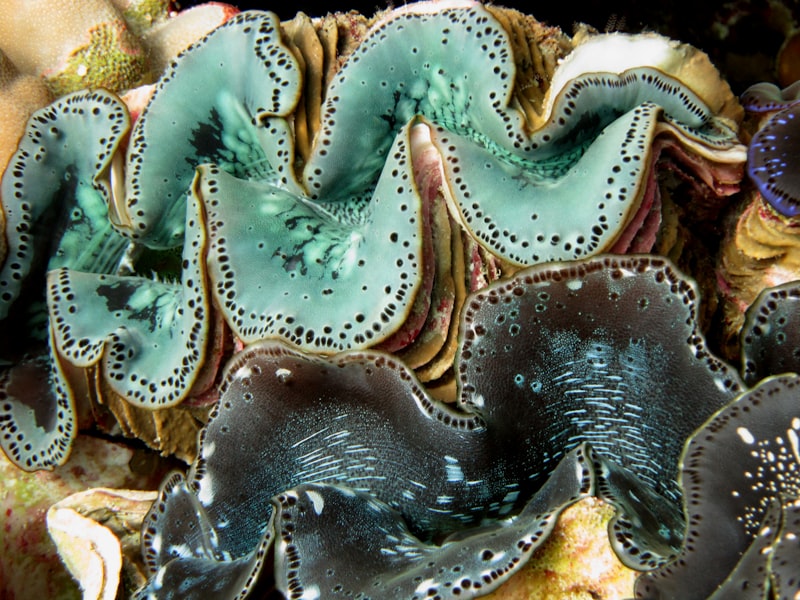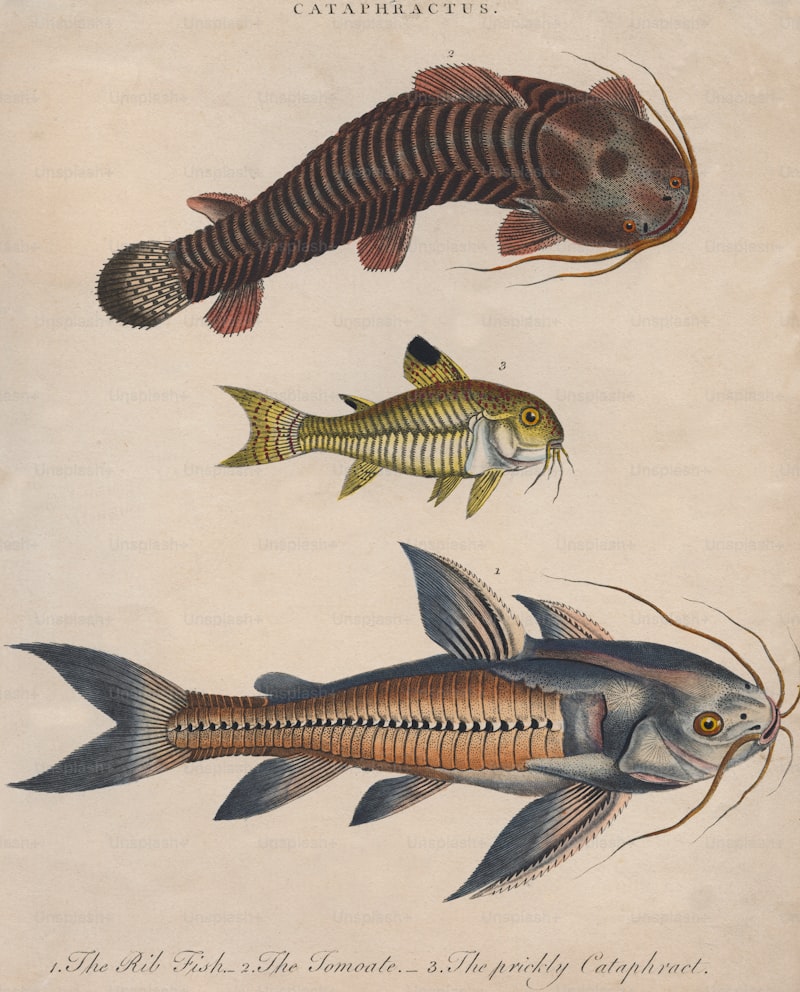Imagine encountering the psychedelic-looking Spanish Dancer, a type of sea slug that gracefully glides through the water with mesmerizing hues of red and orange. Its rhythmic movements resemble a dance, captivating anyone lucky enough to witness it. This creature isn’t just a sight to behold; it’s a testament to the intricacies of marine life.

Venture deeper, and you might stumble upon the enchanting yet mysterious Vampire Squid. Despite its ominous name, this deep-sea dweller is more marvel than menace. With its cloak-like webbing and bioluminescent organs, it navigates the dark depths with eerie grace, evoking a sense of wonder akin to exploring the cosmos.
For those intrigued by alien-like beings, the Bobbit Worm offers a glimpse into a world of bizarre adaptations. Burrowed in the sandy ocean floor, this ambush predator strikes unsuspecting prey with astonishing speed and precision, showcasing nature’s relentless pursuit of survival strategies.
Speaking of survival, the immortal jellyfish defies conventional lifespan norms by reverting to its juvenile stage after reaching maturity. This remarkable ability to regenerate enables it to potentially live indefinitely, making it a symbol of resilience in the face of environmental challenges.
Nature’s creativity knows no bounds, as evidenced by the Leafy Sea Dragon. Resembling a mythical creature from folklore, this seahorse relative is adorned with leaf-like appendages that provide camouflage among seaweed. Its appearance is a reminder of how evolution crafts adaptations that blend artistry with functionality.
In the realm of marine invertebrates, each species tells a story of adaptation, survival, and interconnectedness. From the depths of the ocean to the shallows, these creatures enrich our understanding of biodiversity and inspire awe with their beauty and ingenuity. Explore the world beneath the waves, and you’ll discover that the ocean’s hidden wonders are as diverse as they are captivating.
Beyond Coral Reefs: Discovering the Alien-Like World of Deep-Sea Invertebrates
Among the most astonishing deep-sea invertebrates are the anglerfish, known for its bioluminescent lure dangling from its forehead like a fishing rod in the abyss. This adaptation allows it to attract prey in the darkness, embodying nature’s ingenuity in the depths. Similarly, the giant squid, with eyes the size of dinner plates, navigates these lightless waters with grace, an apex predator in its domain.
In this otherworldly realm, life takes on bizarre forms: from the transparent sea cucumber, resembling a drifting ghost, to the spiny yeti crab that farms bacteria on its claws for sustenance. These adaptations highlight evolution’s creativity in a harsh environment where survival hinges on resourcefulness and resilience.
The deep-sea hydrothermal vents, akin to underwater geysers, host thriving communities supported by chemosynthesis—a process where organisms convert chemicals into energy. Here, tube worms resembling vibrant underwater gardens flourish, their existence dependent on symbiotic relationships with bacteria that convert toxic hydrogen sulfide into nutrients.
Exploring these depths is akin to uncovering an alien planet, where every discovery brings new questions and astonishment. What other secrets lie hidden beneath the crushing depths, where sunlight dares not penetrate? The alien-like world of deep-sea invertebrates invites us to ponder the limits of life and evolution on Earth, a testament to nature’s boundless wonders.
This glimpse into the abyssal world challenges our perceptions and fuels our curiosity, reminding us that beneath the waves, an alien-like realm teems with life forms as enchanting as they are resilient.
Nature’s Oddities: The Bizarre Beauty of Deep-Sea Marine Invertebrates
Have you ever wondered what lies beneath the mysterious depths of the ocean? Deep-sea marine invertebrates are some of the most fascinating creatures on our planet, showcasing a bizarre beauty that seems straight out of science fiction. These creatures, devoid of backbones, roam the ocean floor in a mesmerizing display of evolutionary adaptation.
Imagine a world where jellyfish pulsate with bioluminescent light, creating an underwater light show that rivals the aurora borealis. These ethereal beings, with their translucent bodies and trailing tentacles, drift through the darkness with an otherworldly grace. They are not just creatures of the night but vital members of the deep-sea ecosystem.
Then there are the deep-sea squids, masters of camouflage and agility. These cephalopods, with their mesmerizing iridescence and eyes that gleam in the darkness, hunt their prey with a stealth that borders on the supernatural. Their ability to change colors and patterns instantaneously is a testament to millions of years of evolution, perfecting the art of survival in an unforgiving environment.
Moving deeper into the abyss, we encounter creatures like the vampire squid, a name that evokes both fear and fascination. Contrary to its name, this enigmatic creature does not suck blood but instead glides gracefully through the deep waters, using bioluminescent displays to communicate in the darkness. Its cloak-like webbing and large, light-emitting organs make it a true marvel of deep-sea adaptation.
One cannot forget the deep-sea anglerfish, a creature that seems plucked from a nightmare with its grotesque appearance and bioluminescent lure dangling eerily in front of its jaws. These fish, with their massive heads and enormous mouths lined with fang-like teeth, epitomize the ruthless nature of survival in the deep ocean trenches.
The deep-sea marine invertebrates offer us a glimpse into a world of extraordinary diversity and beauty. From the delicate jellyfish to the fearsome anglerfish, each creature has adapted uniquely to its harsh environment, showcasing nature’s creativity and resilience. Exploring these oddities of nature reminds us of the vastness of our oceans and the endless wonders they hold.
Unveiling Underwater Oddities: Rare Marine Invertebrates You’ve Never Seen
Diving deeper, one might stumble upon the bobbit worm, a predatory nightmare resembling a creature from a science fiction film. With its sharp mandibles and lightning-fast strikes, it lurks beneath the sand, waiting for unsuspecting prey to pass by. Its name pays homage to Lorena Bobbitt, drawing a curious connection to its ferocious nature.
In contrast, the immortal jellyfish offers a lesson in resilience. This tiny creature can revert its life cycle, transforming from adult medusa back to juvenile polyp. It’s a marvel of regeneration, defying conventional biological aging.
For those enchanted by ethereal beauty, the sea butterfly presents itself as a floating work of art. Drifting through the ocean’s currents, it showcases delicate wings reminiscent of stained glass. Its translucent body and graceful movements make it a spectacle of natural elegance.
Consider also the dumbo octopus, named after the Disney character for its prominent ear-like fins. This deep-sea dweller gracefully glides through the darkness, captivating with its charm and unusual appearance.
Secrets of the Abyss: Uncovering the Enigmatic Lives of Deep-Sea Invertebrates
Imagine a world where sunlight fades into darkness, and pressure mounts with every fathom descended. Here, survival is an art perfected over millennia. Deep-sea invertebrates, from colossal squids to ethereal jellyfish, have evolved extraordinary traits to thrive in this extreme environment. Their bioluminescent displays light up the darkness like a celestial dance, mesmerizing and elusive.
Among these enigmatic beings, the giant tube worms stand out as architectural marvels. They build colonies around hydrothermal vents, tapping into the Earth’s internal heat for sustenance. These towering structures, akin to underwater skyscrapers, provide shelter for a myriad of other deep-sea dwellers, illustrating nature’s ingenious collaboration.
Yet, survival in the abyss demands more than resilience—it requires cunning strategies for reproduction and sustenance. Some invertebrates, like the vampire squid, employ bioluminescent camouflage to evade predators, disappearing into the ink-black waters at will. Others, such as the elusive dumbo octopus, gracefully navigate the depths with ear-like fins, embodying elegance in adaptation.
But perhaps the greatest mystery lies in the depths yet unexplored. What undiscovered species lurk in the abyssal plains? What ancient adaptations await discovery, hidden in the eternal darkness? The secrets of deep-sea invertebrates continue to beckon, offering tantalizing glimpses into the evolution of life itself.
In this alien realm where pressure is crushing and light is but a memory, deep-sea invertebrates thrive against all odds. Their lives, shrouded in mystery, remind us of the boundless wonders that await beneath the waves—a testament to nature’s resilience and the enduring allure of the unknown.
Underwater Marvels: The Spectacular Diversity of Strange Marine Invertebrates
Imagine encountering the blanket octopus, a creature adorned with flowing webs of iridescent skin that billow like sails in the ocean currents. These delicate creatures, despite their ethereal appearance, possess an incredible strength that allows them to wield deadly Portuguese man o’ war tentacles as weapons against predators.
Venturing deeper, the mesmerizing bobtail squid emerges, its bioluminescent glow illuminating the darkness like a celestial star. These tiny marvels are masters of camouflage, able to match the faintest hint of moonlight with their skin’s natural luminescence, evading both prey and predator alike.
Further still, the deep-sea anglerfish lurks in the abyssal plains, a true nightmare of the deep with its gaping maw and bioluminescent lure dangling above its toothy grin. In the relentless darkness, this fearsome predator uses its glowing lure to attract unsuspecting prey into its deadly embrace.
Not all marine invertebrates are predators, however. The psychedelic sea slug captivates with its vibrant colors and intricate patterns, a testament to nature’s penchant for artistic expression. These gentle grazers roam coral reefs, feeding on toxic sponges and incorporating their venomous compounds for their own defense.
From the Deep: Meet the Most Fascinating Marine Invertebrates on Earth
Among these marvels is the coral, not just a rock-like structure but a bustling community of tiny polyps that build vast, vibrant reefs. These underwater cities provide shelter and sustenance for countless marine species, acting as crucial ecosystems in our planet’s delicate balance. Equally mesmerizing are the sea stars, with their ability to regenerate lost limbs and their role as apex predators in rocky seabeds.

Delving deeper, we encounter the mysterious deep-sea creatures that defy imagination. The vampire squid, with its cloak-like webbing and bioluminescent abilities, navigates the dark depths with an eerie grace. In contrast, the giant squid, a legendary behemoth of the ocean’s abyss, remains an elusive symbol of marine exploration.
Consider the humble sea cucumber, a quiet gardener of the ocean floor, recycling nutrients with its constant sifting of sediment. Its role may seem modest, yet it plays a crucial part in maintaining marine biodiversity. Meanwhile, the chambered nautilus, a living fossil from prehistoric times, continues to survive in the deep seas with its spiral-shell design that has inspired human engineering.
Each of these marine invertebrates offers a glimpse into the astonishing diversity and resilience of life in our oceans. From the fragile beauty of coral reefs to the alien-like adaptations of deep-sea dwellers, they remind us of the wonders that remain undiscovered beneath the waves. As we strive to understand and protect these ecosystems, their survival becomes intertwined with our own, underscoring the importance of ocean conservation in preserving Earth’s natural marvels.
Frequently Asked Questions
Where can I find unusual marine invertebrates in the ocean?
Discovering unusual marine invertebrates in the ocean involves exploring diverse habitats such as deep-sea vents, coral reefs, and polar regions. Look for unique species like the vampire squid, basket star, or sea pig in these environments, which host remarkable biodiversity.
Why are unusual marine invertebrates considered hidden wonders?
Unusual marine invertebrates are considered hidden wonders due to their extraordinary adaptations, unique behaviors, and rare occurrences in the depths of the ocean. These creatures often possess bizarre anatomical features and play crucial ecological roles despite their elusive nature.
How can unusual marine invertebrates benefit marine ecosystems?
Learn how unusual marine invertebrates contribute to marine ecosystems by providing unique ecological niches, enhancing biodiversity, and promoting nutrient cycling through their specialized behaviors and interactions.
How do unusual marine invertebrates adapt to their environments?
This FAQ explains how unusual marine invertebrates adapt to their environments. It focuses on the unique adaptations such as camouflage, bioluminescence, and specialized appendages that help them survive and thrive in diverse ocean habitats.
What are some examples of unusual marine invertebrates?
Explore fascinating examples of unusual marine invertebrates with our concise guide. Discover creatures like the psychedelic frogfish, the graceful sea pen, and the alien-like blanket octopus. Each species offers a unique glimpse into the diverse and mysterious world beneath the waves.


